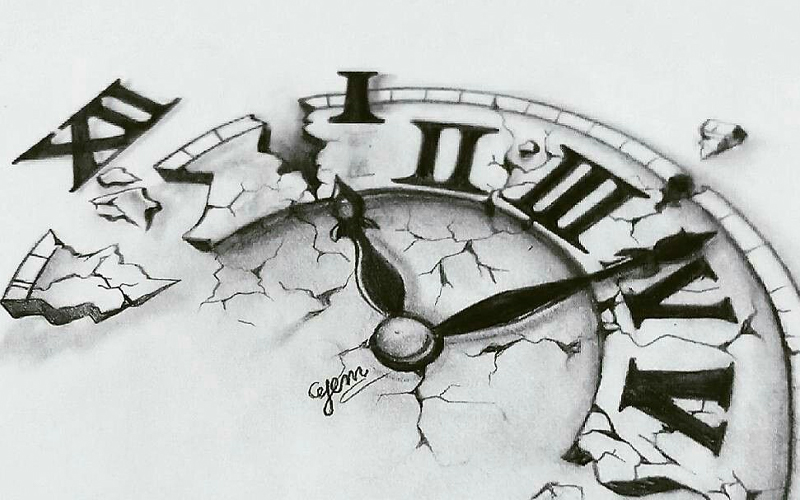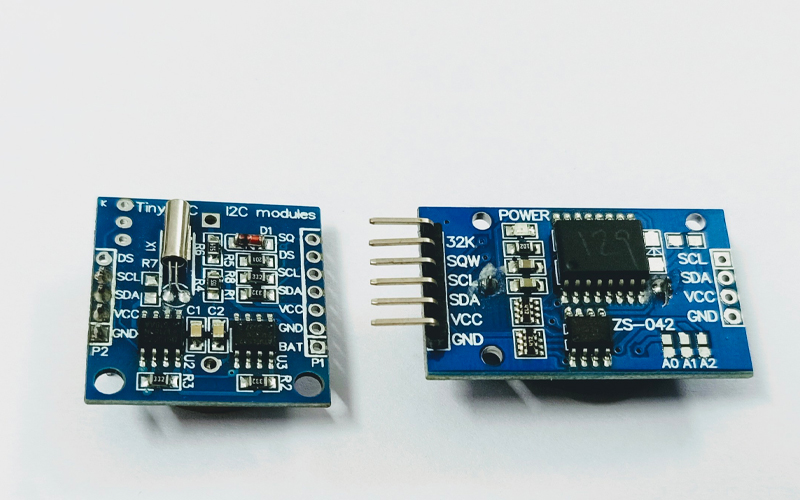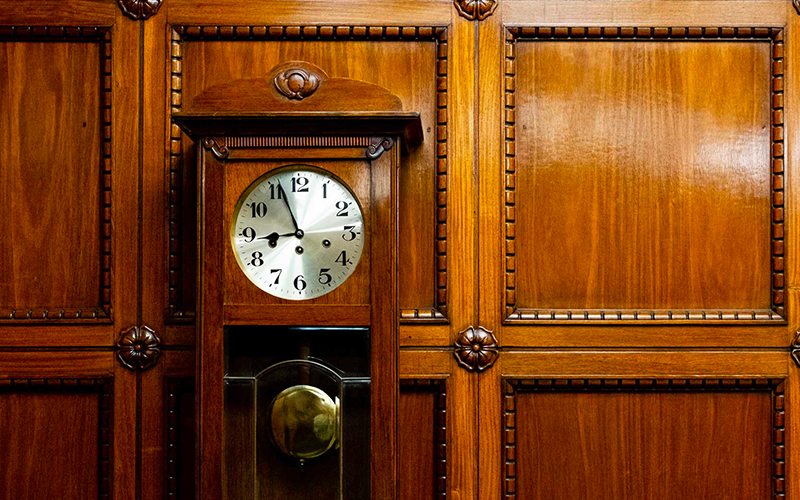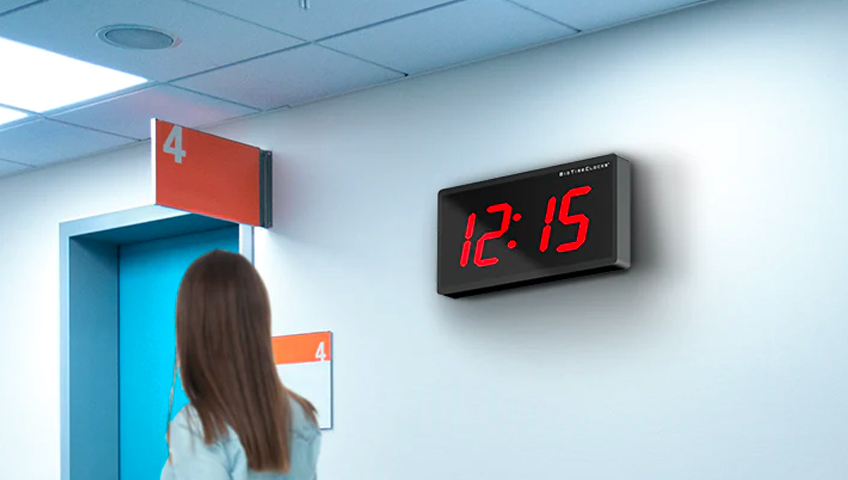How to fix a broken clock, Fixing a broken clock depends on the nature of the problem. Here are some general steps you can take to troubleshoot and potentially fix common issues with clocks:
- If your clock is battery-operated, make sure the batteries are in good condition and inserted correctly.
- For mechanical clocks, ensure they are wound properly if they require manual winding.
- If the clock is running but the hands are not moving, check for obstructions. Sometimes, the hands can get stuck on each other or on other parts of the clock.
- Check if the hands of the clock are properly aligned. If they are not pointing to the correct numbers, you may need to gently adjust them.
- If your clock has a pendulum and is not keeping time, make sure the pendulum is swinging freely. Adjust the pendulum’s length if necessary.
- If you’re comfortable, open the clock case and inspect the movement. Look for broken or damaged gears, springs, or other components. Be cautious and gentle when handling the internal mechanisms.
- Over time, dust and debris can accumulate in the clock movement, affecting its performance. Carefully clean the gears with a soft brush and, if necessary, lubricate the moving parts with clock oil.
- If you’re unable to identify or fix the issue, it’s advisable to seek the help of a professional clock repair service. Clocks, especially antique or valuable ones, may require specialized knowledge and tools.
Remember that fixing a clock may require a certain level of skill and understanding of clock mechanisms. If you’re unsure or uncomfortable with the process, it’s best to consult a professional clock repair person to avoid causing further damage.
Clock Check the Power Source
When checking the power source of a clock, consider the following steps:
Battery-Powered Clocks: For clocks that operate on batteries, open the battery compartment and check the batteries. Make sure they are inserted correctly and are not corroded. Replace the batteries with fresh ones, even if the existing ones still have some charge. Sometimes, clocks can be sensitive to the voltage level, and using new batteries can resolve issues.
Electric Clocks: If your clock is electric and plugs into an outlet, make sure the power cord is securely connected to both the clock and the power source. Check for any visible damage to the cord. Test the outlet with another device to ensure it’s functioning properly.
Mechanical Clocks: Mechanical clocks usually do not have a power source like batteries or electricity. Instead, they may need to be wound manually. Check if your clock requires winding and, if so, wind it according to the manufacturer’s instructions.
Troubleshoot the Power Supply: If your clock has a power source but still isn’t working, consider using a different set of batteries or trying a different outlet to eliminate the possibility of a faulty power source.
Inspect for Battery Leakage: In battery-powered clocks, if you notice any signs of battery leakage, carefully clean the affected area and replace the batteries. Battery leakage can damage the internal components of the clock.
Remember, if you’re unsure about any aspect of checking the power source or troubleshooting the clock, it’s advisable to consult the clock’s user manual or seek the assistance of a professional clock repair person. Additionally, some clocks may have specific instructions or requirements for power, so consulting the manufacturer’s guidelines can be helpful.
Clock Ensure Proper Alignment
Ensuring proper alignment of the clock hands is crucial for accurate timekeeping. Here’s how you can check and adjust the alignment:
If your clock is running, stop it to avoid interference with the hands.
Set the clock to the correct time by using a reliable time source, such as a smartphone or another accurate clock.
Ensure that the hour hand is pointing directly at the correct hour marker. If not, gently move it to the correct position.
Similarly, check the minute hand and make sure it aligns precisely with the correct minute marker. Adjust it if necessary.
If your clock has a second hand, ensure it is moving smoothly and isn’t catching on the other hands or the clock face.
Some clocks have a small nut or knob on the center spindle that holds the hands in place. Make sure it is tightened appropriately to secure the hands in their correct positions.
Start the clock and observe the movement of the hands. Confirm that they move smoothly and maintain proper alignment.
If needed, make small, incremental adjustments to achieve precise alignment. Avoid forcing the hands, as this can damage the clock movement.
If you have the user manual for your clock, refer to it for specific instructions on adjusting the hands. Different clocks may have unique mechanisms for hand adjustment.
If you encounter difficulties or if the clock has intricate mechanisms, it may be best to seek the assistance of a professional clock repair person to avoid any potential damage.
Remember to handle the clock hands gently during the alignment process to prevent any damage to the internal components. If you’re unsure about adjusting the hands, consulting a professional is a prudent course of action.
Evaluate the Pendulum Clock
Evaluating a pendulum clock involves checking various components to ensure they are functioning correctly. Here are the steps you can take to assess and potentially troubleshoot a pendulum clock:
Pendulum Swing:
- Ensure that the pendulum is swinging freely. If it’s not moving or swinging erratically, it could affect the clock’s timekeeping.
Pendulum Length:
- Check the length of the pendulum. If the clock is losing or gaining time, adjusting the length of the pendulum can help regulate the timekeeping. Lengthening the pendulum slows down the clock, while shortening it speeds it up.
Pendulum Bob:
- Examine the pendulum bob, the weight at the bottom of the pendulum. Make sure it’s securely attached. If the bob is loose, it can affect the pendulum’s swing and the clock’s accuracy.
Pendulum Adjustment Nut:
- Some clocks have an adjustment nut on the pendulum rod that can be turned to fine-tune the timekeeping. Refer to the clock’s manual for instructions on adjusting this nut.
Clock Leveling:
- Ensure that the clock is level. An uneven surface can affect the pendulum’s swing and cause timekeeping issues. Use a level to check and adjust the clock’s position if necessary.
Escapement Mechanism:
- If you are comfortable doing so, open the clock case and inspect the escapement mechanism. This is the part that regulates the movement of the gears. Ensure it is clean and functioning properly.
Pendulum Suspension Spring:
- Check the pendulum suspension spring for any damage or distortion. If the spring is damaged, it may need to be replaced.
Clock Beat Adjustment:
- Adjust the clock beat if necessary. The beat is the even “tick-tock” sound produced by the escapement. If it sounds uneven, you may need to adjust the beat.
Consult the User Manual:
- If you have the user manual for your clock, refer to it for specific instructions on adjusting the pendulum and regulating the clock.
Professional Assistance:
- If you encounter difficulties or if the clock requires more complex adjustments, consider seeking the assistance of a professional clock repair person.
Always handle the components of the clock with care, and if you’re uncertain about any adjustments, it’s best to consult the clock’s user manual or seek professional help to avoid causing damage.








